Research Symposium
22nd annual Undergraduate Research Symposium
Nina Perdomo Poster Session 5: 1:30-2:15/Poster #67
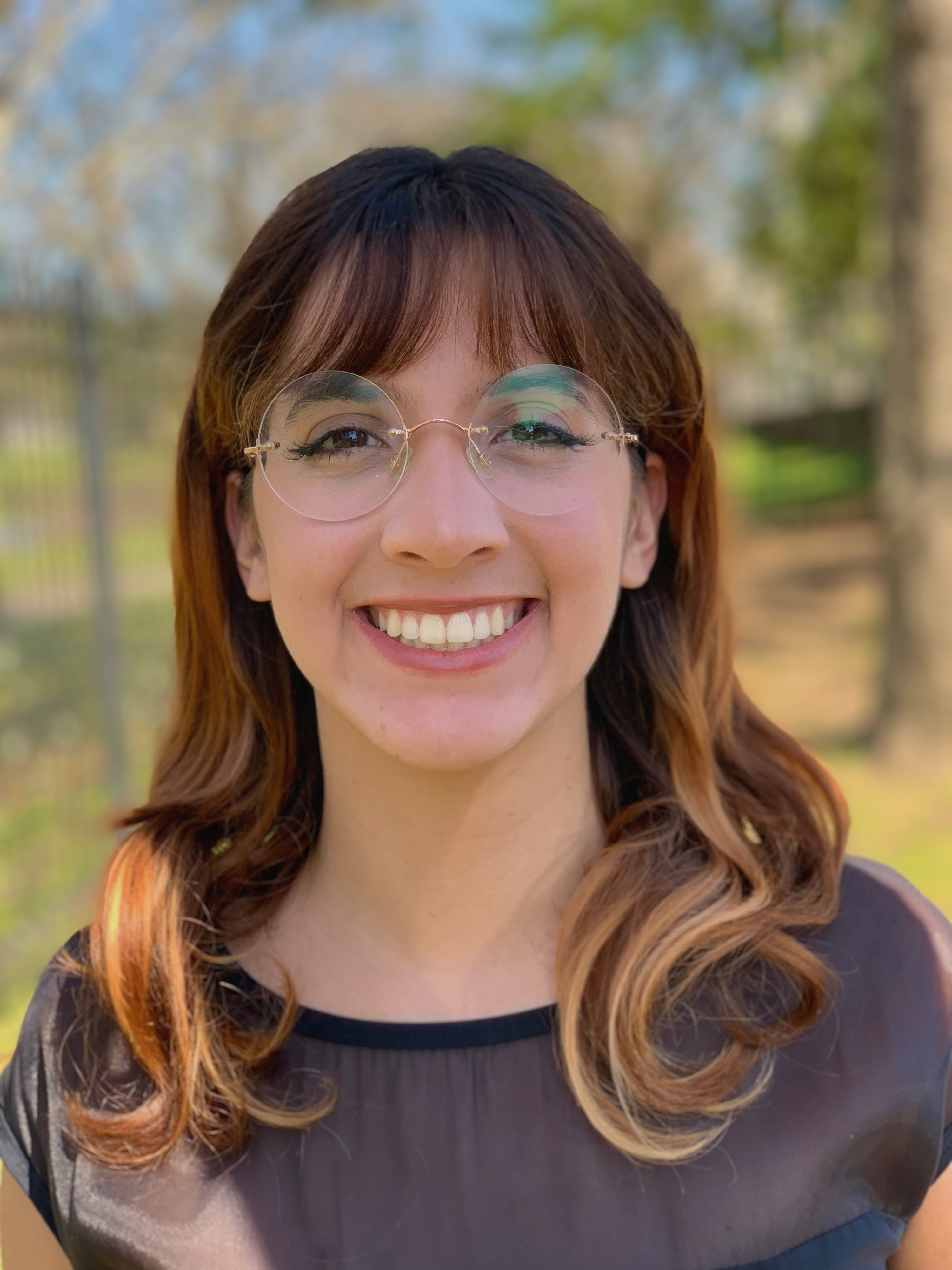
BIO
My name is Nina Perdomo, and I am a 4th year senior at FSU double majoring in Classical Archaeology and Italian with two minors in Anthropology and English. I was born in Lima, Peru but was raised in Miami, Florida and I am incredibly proud of my Hispanic heritage. After graduating in April, I will be attending the George Washington University for graduate school to receive a M.A. in Museum Studies. Education aside, a few of my hobbies include playing guitar and collecting houseplants!
Iconography of the Battle of Actium: Understanding Augustan Propaganda through Images in the Ancient and Modern Worlds
Authors: Nina Perdomo, Dr. Nancy de GrummondStudent Major: Classical Archaeology, Italian
Mentor: Dr. Nancy de Grummond
Mentor's Department: Classics Mentor's College: Arts and Sciences Co-Presenters:
Abstract
What do primary sources with iconography such as coins, reliefs, and monuments, referencing the Battle of Actium, reveal about the time period from the Triumvirate to the early Principate (44 BCE - 27 BCE)? How do we use iconography from the Battle of Actium in primary sources to better understand Augustan propaganda today? Although there is much existing scholarship regarding the Battle of Actium through an art historical perspective, there is significantly less research on the impact of iconography referencing the battle from an archaeological perspective. By researching material culture and exhibition displays, this study will provide insight as to how iconography of the Battle of Actium influenced ancient people, and how these messages according to the Roman perception should be interpreted in the modern world. Through understanding iconography referencing the Battle of Actium, scholars can better comprehend why certain symbols were used, how ancient people interacted with these symbols, and how modern viewers should interpret their impacts today. Material culture can be displayed in various ways and convey different meanings depending on placement and descriptions in an exhibit. Museums and their exhibits can mold people’s understandings of iconography; therefore, it is also important to note how modern spaces portray the iconography from the Battle of Actium and analyze modern interpretations of the symbols.
Keywords: Classics, Archaeology, Museums, Exhibition
22nd annual Undergraduate Research Symposium
Adrian Pineda Poster Session 4: 12:30 - 1:15/Poster #36

BIO
Sophomore from Tallahassee, Fl with an interest in pursuing a career with the Intelligence Community.
The Enemy of My Enemy Is My friend
Authors: Adrian Pineda, Brandon BernickStudent Major: International Affairs
Mentor: Brandon Bernick
Mentor's Department: Department of History Mentor's College: College of Arts and Sciences Co-Presenters: Luke Bilsborough
Abstract
Following WWII, the United States and Western Germany, under the impetus of Captain John R. Boker and former Wehrmacht Major General Reinhard Gehlen, initiated an extensive espionage operation throughout the Eastern Bloc. “Operation Rusty” played a fundamental role in early Cold War intelligence acquisition. It was the primary source of American information on the Soviet Union. However, when the Soviet Union successfully infiltrated Operation Rusty by turning a select number of its agents, it likely fed false information to the Americans and Germans. This project seeks to answer three major questions: 1. What connection is there between Gehlen’s appointment as the Chief of the German Wehrmacht Fremde Heere Ost intelligence section and a marked increase in mass murder under the Holocaust? 2. How did successful Soviet corruption of Rusty agents impact the machinations of the operation? 3. How did this corrupted information impact American Cold War domestic and foreign policy?
Keywords: Spy, Russia, Germany, WWll, CIA
22nd annual Undergraduate Research Symposium
Catalina Smith Poster Session 7: 3:30 - 4:15/Poster #54

BIO
Hello! I am a sophomore here at FSU, originally from Tampa, Florida. Besides UROP, I enjoy working out, cooking, and taking walks with my friends! I also intern at the American Children's Campaign and Voices for Florida, a company advocating for children and human trafficking victims. UROP has been an eye-opening experience for me and has dramatically increased my academic and social skills. After completing my undergrad, I plan to attend graduate school for Information Technology at FSU and then working for a software development company!
Ungentlemanly Warfare
Authors: Catalina Smith, Danielle WirsanskyStudent Major: Media/Communication Studies
Mentor: Danielle Wirsansky
Mentor's Department: History Mentor's College: Liberal Arts and Sciences Co-Presenters: Arianna Kassatly
Abstract
Ungentlemanly Warfare is about unearthing the stories of women spies in the Special Operations Executive (SOE) active during WWII. While these agents were very influential in WWII, their stories are often swept under the rug, and they have received very little recognition for their efforts.
Our methodology includes copious research and reading, analyzing texts for gender bias, as well as searching through historical archives to find information on these women. With the research we are engaged in, we are creating a database on these women spies, their backgrounds, and accomplishments. These details show that these women were powerful forces that knew their capabilities and that they were able to aid Europe during these challenging times. These women not only fought fascism but also had to combat the patriarchy while out in the field. These spies’ drive to survive often came from the reminder of what they were fighting for. They found power in keeping their true identities a secret from the Gestapo because in doing so, they were fighting against tyranny and cruelty. These women spies were so passionate about the freedom of their country that they endured unimaginable torture and fear to maintain the SOE and lead to the ultimate destruction of the Nazis. It is now our responsibility to bring their stories to light.
Keywords: SOE, WWII, Women, women spies, Holocaust
22nd annual Undergraduate Research Symposium
Claudia Silver Poster Session 2: 10:00-10:45/Poster #33
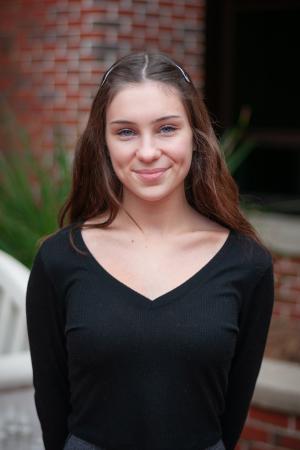
BIO
I am an undergraduate researcher completing Honors in the Major in Dr. Debra Fadool’s Laboratory.
Does prenatal exposure to cannabidiol influence changes in olfactory sensory neurons or success of birth?
Authors: Claudia Silver, Dr. Debra FadoolStudent Major: Interdisciplinary Medical Sciences
Mentor: Dr. Debra Fadool
Mentor's Department: Biological Sciences Mentor's College: College of Arts and Sciences Co-Presenters:
Abstract
Recently, the use of products containing cannabis-derived compounds has seen a significant increase in both popularity and usage worldwide. The hemp plant Cannabis sativa contains hundreds of phytocannabinoids. Of primary interest are Δ9-tetrahydrocannabinol, the psychoactive component of Cannabis, and CBD (cannabidiol), the major non-psychoactive component of Cannabis (Mackie, 2008). CBD is known to exhibit pharmacological effects and is being investigated for its therapeutic treatment of numerous issues like anxiety, depression, and nausea (Zuardi, 2008). Its implications in treating nausea have caused an increase in individuals using CBD during pregnancy (Ochiai, 2020). Little is currently known about the effects of CBD on fetal development.
It is currently unknown if CBD can affect the olfactory system, which itself has endocannabinoid receptors. The development of the olfactory system can be used as a model system to infer whether mice have developed properly (López-Mascaraque, 2002). Olfactory sensory neurons (OSNs), which are the receptor cells for smell, pass sensory information to the brain through mega-synapses called glomeruli (Imamura, 2016). The number of M72 OSNs is affected by dietary and developmental conditions (Fadool 2004, Thiebaud 2014). CBD may therefore have an effect on development that will be observable through changes in glomerular anatomy.
Various developmental defects can alter litter size, pup weight, maternal gestation weight, and fertility (Moon, 2006). THC reduces the rate of birth success, independent of any developmental defects (Dong, 2018). CBD usage during pregnancy may therefore adversely affect these aspects of fetal development (litter size, pup weight, maternal gestation weight, fertility).
Keywords: Cannabidiol, pregnancy, olfactory system
22nd annual Undergraduate Research Symposium
Mariana Lima Poster Session 5: 1:30-2:15/Poster #30
BIO
My name is Mariana Lima and I’m currently pursuing a BS in Exercise Physiology here at FSU! I’m originally from Brazil, but I’ve lived in Florida for most of my life and knew attending an incredible Florida institution such as Florida State was my first choice. I plan on attending medical school after I graduate, and began doing research in Dr. Steiner's lab as an introduction to the science and research world. Quickly fell in love with learning about muscle and all of the work she has been doing in that lab.
Low-Dose Alcohol Consumption Throughout Chemotherapy Does Not Amplify Muscle Wasting
Authors: Mariana Lima, Jennifer Steiner, Ph.D.Student Major: BS in Exercise Physiology
Mentor: Jennifer Steiner, Ph.D.
Mentor's Department: NUTRITION & INTEGRATIVE PHYSIOLOGY Mentor's College: College of Health and Human Sciences Co-Presenters:
Abstract
Chronically high levels of alcohol consumption leads to skeletal muscle wasting, contributing to myopathy and cachexia. Chemotherapy treatment can induce cachexia independently of the presence of cancer. Furthermore, consuming alcohol while receiving chemotherapy treatment has unknown effects but may further exacerbate muscle wasting. To determine if alcohol consumption further worsens rodent skeletal muscle loss due to chemotherapy treatment. Male BALB/c mice (n= 23), were randomized into 4 groups (n= 4-8/gr): Control-Chemo, Control-non-Chemo, EtOH-Chemo, EtOH-non-Chemo. Mice consumed 8% v/v EtOH in drinking water for 20 weeks. Control-Chemo and EtOH-Chemo mice received intraperitoneal injections of the chemotherapy treatment FOLFIRI for 3 weeks until sacrifice, while Control-non-Chemo and EtOH-non-Chemo mice received vehicle (saline). Mice were euthanized when the average weight loss of the chemotherapy-treated group was 15-20% of initial bodyweight. The gastrocnemius and quadriceps muscles, tibias, spleen, seminal vesicles, and testes, were excised. Tissue weight data were normalized to tibia length and analyzed via 2-way ANOVA. Both treatments significantly decreased body weight (p<0.05), while chemotherapy reduced seminal vesicle and teste weights. Independent samples t-test show alcohol consumption reduces spleen weight (p=0.0424) during chemotherapy. A trend for a main effect of chemotherapy treatment was detected for gastrocnemius and quadricep mass (p=0.07-0.09), but no further effects of alcohol were observed. Low-dose alcohol consumption did not exacerbate muscle atrophy due to chemotherapy. Results should be validated in follow-up work with larger sample sizes.
Keywords: muscle, alcohol, chemotherapy
22nd annual Undergraduate Research Symposium
Cristina Murdock Poster Session 6: 2:30 - 3:15/Poster #50
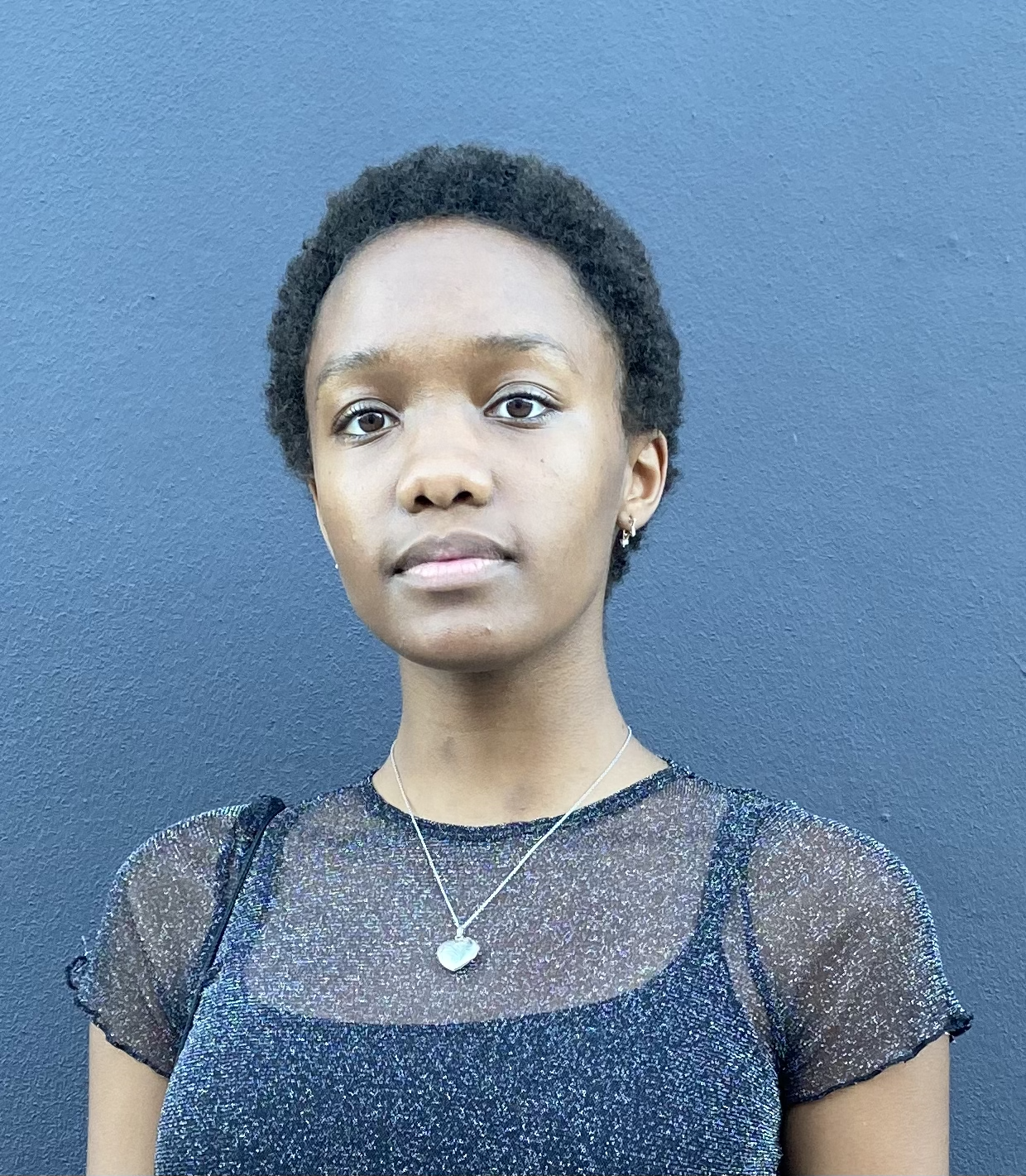
BIO
My name is Cristina Murdock. I was born and raised in Fort Lauderdale, Florida. My research interests include why there isn't a lot of representation for black Americans in aquatic sports and how educators in America can frame their teaching to better support their learners. I am still figuring out what I want to do in the future, but being a part of the FSUTeach program has put a lot of things into perspective for me.
See it Through My Eyes: The comparison of teacher and student perspective on productive science talk and “doing science” in the classroom.
Authors: Cristina Murdock, Jennifer SchellingerStudent Major: Biology, FSUTeach
Mentor: Jennifer Schellinger
Mentor's Department: School of Teacher Education Mentor's College: College of Education Co-Presenters: Alexander Blanco
Abstract
The purpose of the Learning through Collaborative Design Professional Development (LCDPD) project is to support science teachers in meeting reform visions for science education (NGSS, 2013; NRC, 2012). One aspect of this vision is to engage students in productive science talk, talk that positions students to sensemake about scientific phenomenon and develop understandings of scientific concepts and practices. This study takes a deeper look into Mr. Jerry’s middle school biology class to better understand how Mr. Jerry and his students interpreted four focal lessons designed to engage them in productive talk. Through thematic coding, the first four authors identified aspects of students’ interpretations and feelings around these lessons and compared them with Mr. Jerry’s perspective of the same lessons. Through this analysis, we found Mr. Jerry and his students to have similar accounts of the importance of talk in the classroom, and that one lesson, the skin cancer lesson, was particularly impactful on students’ ideas about how science is done. Additionally, we found that Mr. Jerry and his students differed on how they saw the teacher's role in talk, as Mr. Jerry saw himself as a facilitator and his students saw him in an authoritative “knowledge giver” role. These initial findings suggest the need for research to look deeper at the framing of the lesson and the role students’ perception plays in the larger ideas of “doing science” when engaging in talk.
Keywords: STEM Education, Science talk, Productive talk
22nd annual Undergraduate Research Symposium
Isabella Ensign Poster Session 7: 3:30 - 4:15/Poster #42
BIO
Isabella Ensign is a first-year FSU student studying Environment and Society on a Pre-Law track. In the past, she has completed research on gun violence and safety precautions in public schools in America. She is also Deputy News Editor of the FSView and President of Students Demand Action at FSU, and in her free time, likes spending time with her cat, Tucker.
Fatal Anti-Transgender Violence in America: Building a Database of Transgender Homicides
Authors: Isabella Ensign, Dr. Brendan LantzStudent Major: Environment and Society
Mentor: Dr. Brendan Lantz
Mentor's Department: Criminal Justice Mentor's College: College of Criminology Co-Presenters: Danielle Basdekis, Hannah Fulk
Abstract
Violence against the transgender community is a serious social issue, and researchers argue that anti-transgender homicide is an increasingly violent epidemic that proves transphobia is still prominent and dangerous in American society. Addressing this violence requires understanding anti-transgender bias, yet a comprehensive database on victims of anti-transgender violence does not currently exist. Therefore, our research team has been working to create such a database of all known anti-transgender homicides in the United States between 2015 and 2020. Once completed, the comprehensive database will be used to examine (a) broad patterns in incidents over time and (b) individual, situational, and contextual features of fatal violence directed at the transgender population. Preliminary results from these data collection efforts as well as the narratives of transgender people lost to this form of violence will be presented.
Keywords: Transgender, Violence, Anti-Transgender
22nd annual Undergraduate Research Symposium
Michelle Polanco Poster Session 3: 11:00- 11:45/Poster #54
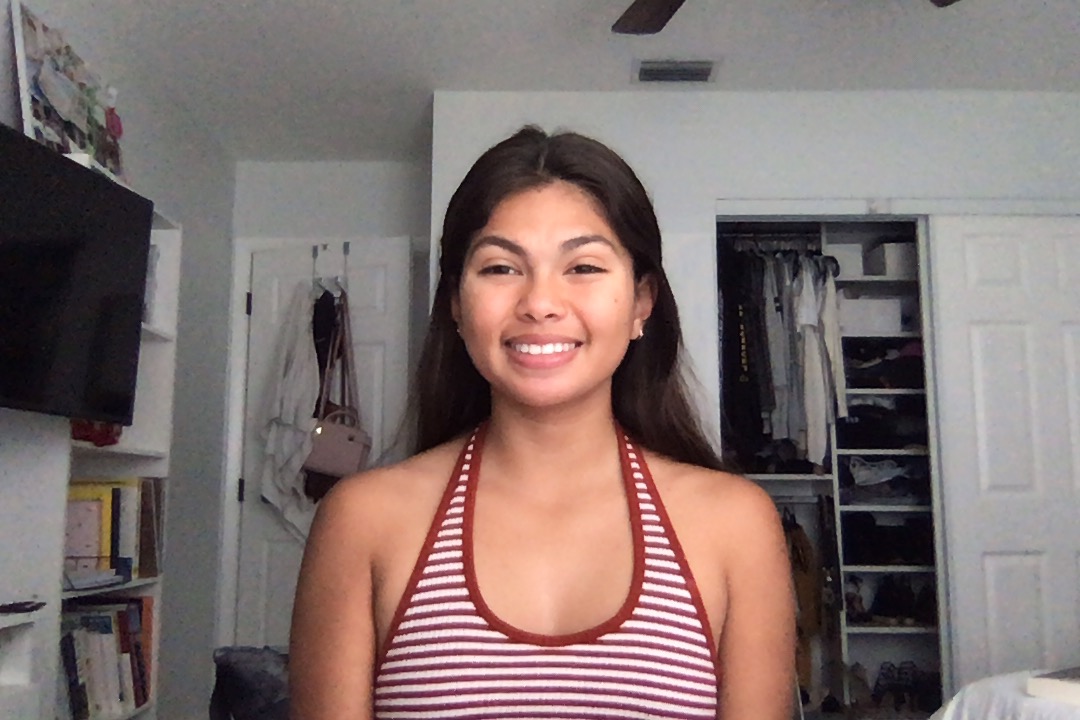
BIO
I was born and raised in South Florida near Fort Lauderdale. As a result Im a huge fan of the beach and spending time outdoors. My career aspirations pertain to attending law school and hopefully following the path to becoming a judge.
Navigating College During the Pandemic
Authors: Michelle Polanco, Riccardo PuritaStudent Major: political science
Mentor: Riccardo Purita
Mentor's Department: I dont know Mentor's College: College of Education Co-Presenters: Kailey DiPalo
Abstract
As colleges and universities pursue a transition back to fully in-person classes, the prevailing narrative of returning to “normalcy” dominates the conversation. Unfortunately, asserting a “back to normal” mindset disregards the disparate experiences faced by students with disabilities in comparison to their peers. This project presents a review of 10 previous studies that analyzed college experiences for students with disabilities, particularly during the COVID-19 pandemic. Our findings show that this population has experienced high rates of depression and a lower sense of belonging during the pandemic. As an already marginalized group, COVID-19 hindered their college experiences further including making it more challenging for them to receive accommodations. We show that additional qualitative studies focused on student narratives are needed as well as studying intersecting identities such as students with disabilities and limited financial resources.
Keywords: covid-19, students with disabilities, college resources, mental health
22nd annual Undergraduate Research Symposium
Deanna Vasserman Poster Session 4: 12:30 - 1:15/Poster #26

BIO
I am currently a second year student majoring in Biological Sciences on a pre-med track. I am further pursuing a minor in Psychology and am involved in undergraduate research here at Florida State University. I intend to attend medical school and pursue a career in Emergency Room Medicine.
Long-Term Effects of Simulated Spaceflight Exposure Assessed by Doppler Ultrasonography
Authors: Deanna Vasserman, Sunny AnarayanaStudent Major: Biological Sciences
Mentor: Sunny Anarayana
Mentor's Department: Biomedical Research Mentor's College: Florida State University Co-Presenters: Rachelys Jorrin
Abstract
There are limited studies of assessing the ways in which cardiovascular health is affected by spaceflight. From this study, we investigate how spaceflight affects the heart and vascular properties of rats utilizing the Doppler Ultrasound Technique. This non-invasive technique allows us to acquire information on any effects resulting from spaceflight factors, including the single- and combined-effects of microgravity and deep space radiation. Doppler Ultrasound allows us to quantify heart rate and blood velocity, which is then mathematically transformed by a specialized computational program into specific measurements providing an index of cardiovascular function. These data are then statistically compared and tested for any effects from microgravity +/- deep space radiation exposure. These findings are still on-going, though once complete, can be extrapolated to astronaut health and identify what they may expect from missions to the Moon, and/or beyond, through our Artemis’ projects and human space exploration.
Keywords: Doppler Ultrasonography, Space flight
22nd annual Undergraduate Research Symposium
Ryan The Poster Session 7: 3:30-4:15/Poster #55
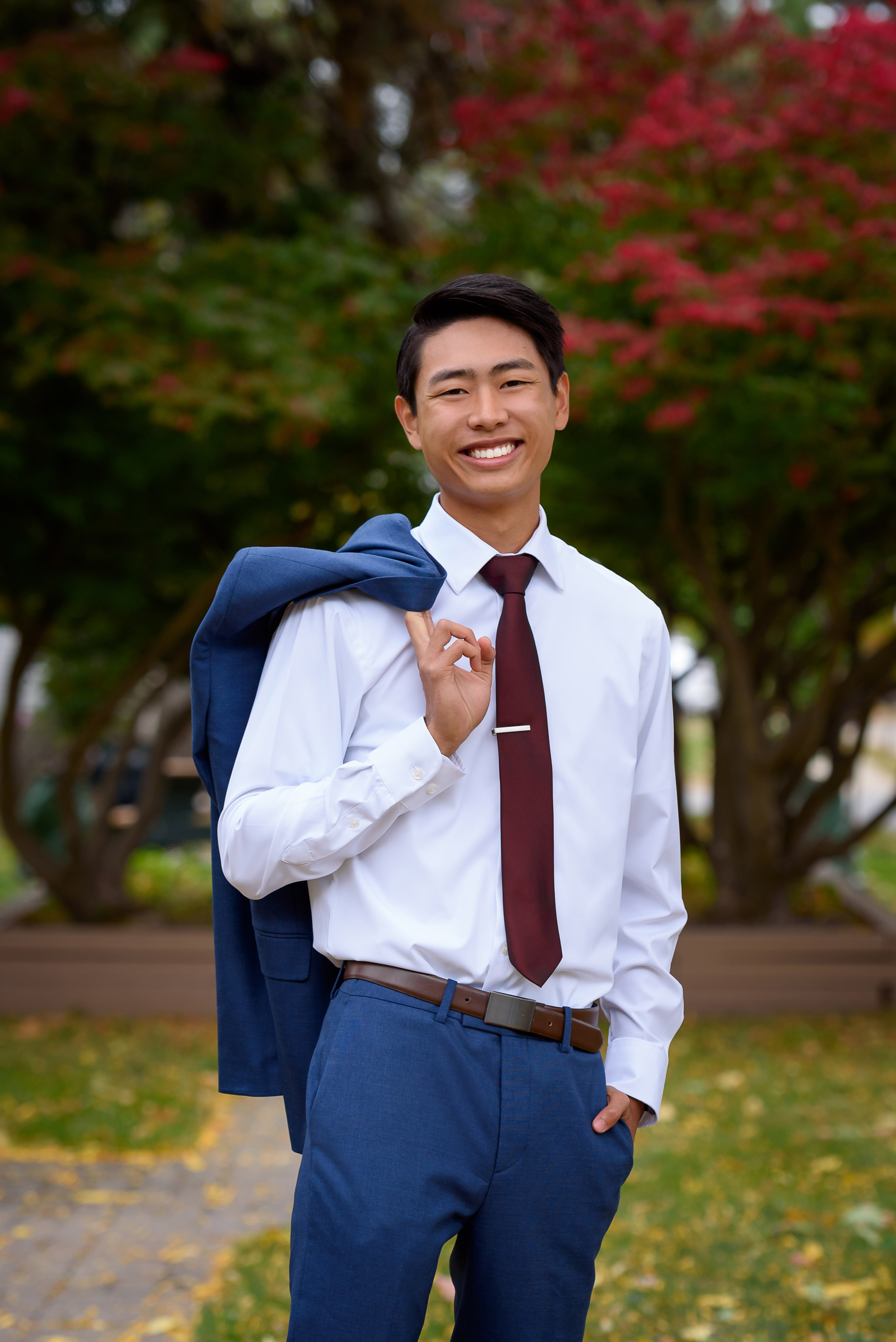
BIO
My name is Ryan The, and I am a first year student studying Public Health and Cell/Molecular Neuroscience at Florida State University. My hometown is Canton, Michigan, and my career goals are to become a physician with a focus on providing healthcare for underprivileged populations in the United States. I am participating in the Undergraduate Research Opportunity Program and am currently conducting research in Dr. Wilber’s lab studying spatial learning and memory in rodent models.
Hippocampus and Parietal Cortex Activity Patterns Encode Coordination Between Map-Like and Body Centered Navigation
Authors: Ryan The, Dr. Aaron WilberStudent Major: Public Health and Cell Molecular Neuroscience
Mentor: Dr. Aaron Wilber
Mentor's Department: Psychology Mentor's College: Psychology Co-Presenters:
Abstract
Navigation is a central part of living in today’s society. Simply making a decision to turn left or right at an intersection to go home or to your favorite restaurant involves many complex mechanisms in the brain. These decisions are made from both egocentric (first-person) and allocentric (third-person). A disruption in spatial awareness is one of the first symptoms to show in Alzheimer’s disease, and thus it is our goal to learn more about how these brain systems work in normal animals so we can understand disease related perturbations. In order to investigate this further, we are building on an existing data set. Our rat, RFB025, was trained in a complex spatial sequence task which involves navigating to a sequence of places with an overlapping element (1-2-3-4-1-2-3-5 and back to 1 to repeat the sequence). Navigating this sequence requires the animal to remember the allocentric (map-like) spatial context, came from 4 vs came from 5, while navigating the 1-2-3 element and then converting this information to the appropriate egocentric action (go to the right to 4 or to the left to 5) in order to obtain a reward. Once the animal has reached criterion, then surgically implanted electrodes into the hippocampus and parietal cortex regions in order to measure brain activity in those areas. Our hypothesis is that our preliminary data will hold true and these brain regions will be critical for both remembering the allocentric context (hippocampus) and converting this information into the appropriate egocentric action (parietal cortex).
Keywords: Neuroscience, navigation, Alzheimer’s, learning
22nd annual Undergraduate Research Symposium
Stephen Chau Poster Session 6: 2:30 - 3:15/Poster #58

BIO
I am a sophomore studying biochemistry at Florida State University. Once I graduate, I'd like to get some real world experience before coming back and furthering my studies.
Representation of Women in Bollywood Films
Authors: Stephen Chau, Rebecca PetersStudent Major: Biochemistry
Mentor: Rebecca Peters
Mentor's Department: Department of Religion Mentor's College: Florida State University Co-Presenters: Emily Nguyen, Riordan Pollock
Abstract
Bollywood films are most popular in India but due to the expansion in the global market, we have seen a rise of such films in the United States especially. While our research is primarily on how female characters are being portrayed by female directors, it is important to understand why such research is relevant. Most commonly, women are portrayed as distressed damsels or submissive to their male counterparts in historical Indian cinema. Not only does this reinforce negative stereotypes, but it does not provide a positive image of women to potentially young and impressionable audiences. Despite these harmful depictions, the Bollywood industry has a mass following and continues to be a lucrative asset--proving its global impact. Suffice to say, the impact of how women are portrayed in Bollywood films is crucial to shaping how they are perceived outside of the cinema. In analyzing several films directed by female directors, our research has illuminated whether or not these depictions are maintained or changed and how that has impacted future perceptions of women.
Keywords: Bollywood, Films, India, Women in film
22nd annual Undergraduate Research Symposium
Jessica Rodgers Poster Session 5: 1:30 - 2:15/Poster #18
BIO
From Louisville, Kentucky, I originally came to FSU to pursue a career in dance as I attended a performing arts high school and have danced for 15 years. However, I'm now a sociology and women's studies double major who is interested in attending law school in the near future. I'm currently involved in Best Buddies, Women Student Union, and Kappa Kappa Gamma. Within these organizations, I hold coordinator positions and am on various committees. I'm interested in research in the fields of sociology, criminology, psychology, history, and communication.
The Others Will Help: Citizen Coproduction and Bystander Apathy
Authors: Jessica Rodgers, Dongfang GaozhaoStudent Major: Sociology and Women's Studies
Mentor: Dongfang Gaozhao
Mentor's Department: Askew School of Public Administration and Policy Mentor's College: College of Social Sciences and Public Policy Co-Presenters: Skyler Miller
Abstract
In an effort to increase co-production and find ways to lessen the power of the bystander effect, we collected data from surveys asking participants to choose which ways they would react to particular emergency scenarios. Hypothesis one posited that if a situation was interpreted as more urgent, a citizen was more likely to co-produce. Hypothesis two proposed that co-production would increase as the number of bystanders decreased as a result of increased personal responsibility. Our research did not support our second hypothesis and we found no influence on our results due to the bystander effect. However, we did find that the urgency and risk of each situation positively influenced co-production, supporting our first hypothesis. Our findings also showed that unclear information (clear messages and instructions rather than “unknown” information help citizens engage in co-production) and high amounts of effort and costs required from the participants negatively impacted co-production. By understanding what lessens the likelihood for an individual to co-produce, there is an opportunity to apply that information to public policy and public safety protocols in a way that might increase co-production as a whole.
Keywords: Sociology, Bystander Effect, Coproduction
22nd annual Undergraduate Research Symposium
Joshua Weltmann Poster Session 3: 11:00-11:45/Poster #7
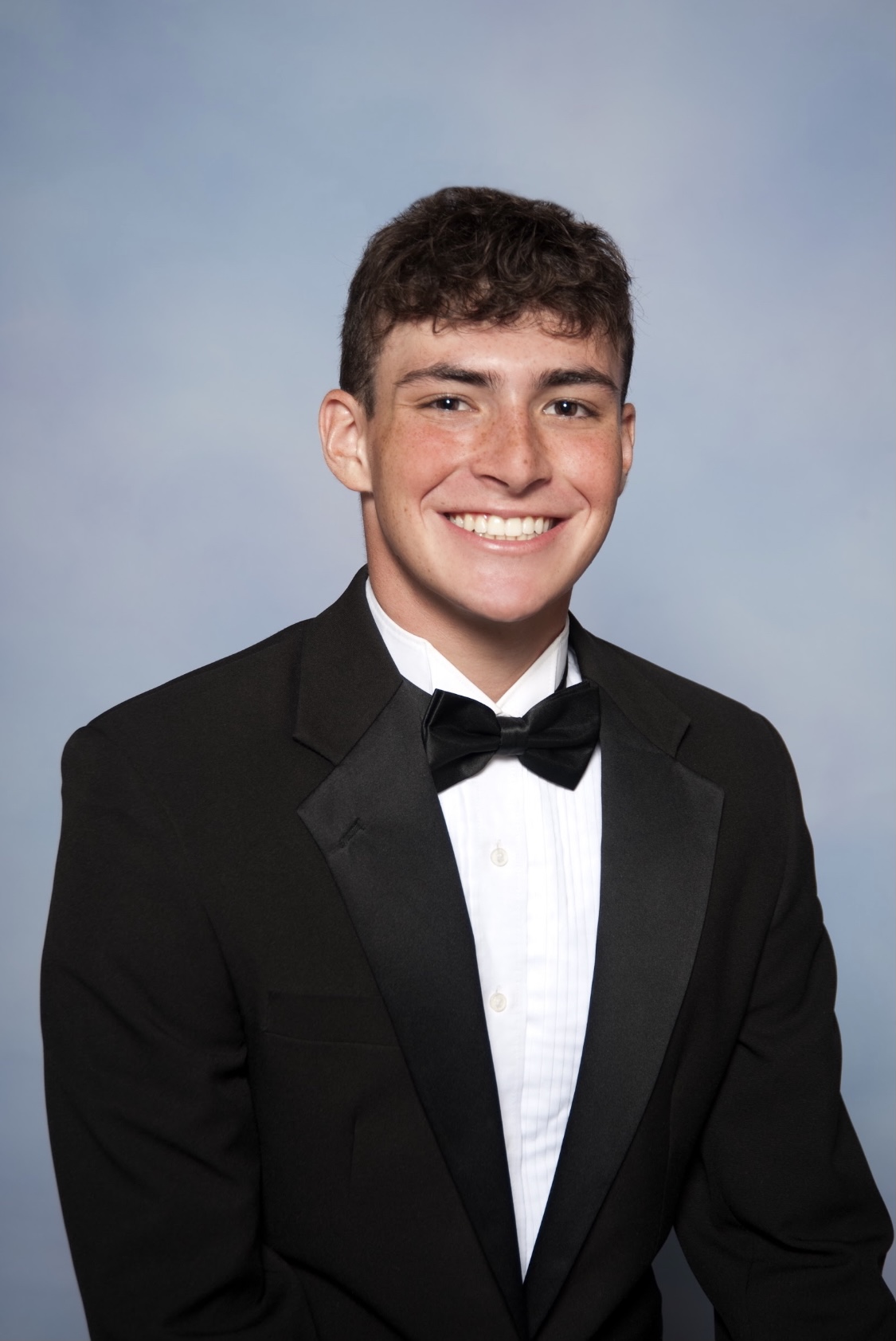
BIO
Hi there, my name is Josh Weltmann and I am a sophomore from West Ft. Lauderdale. My major is biochemistry, and I have plans of going to medical school to hopefully become an anasthesiologist. The research I conduct is computational polymer chemistry. In my free time I like to play guitar.
Optimizing Ring Strain Energy Predictions Towards Chemically Recyclable Materials
Authors: Joshua Weltmann, Brianna CoiaStudent Major: Biochemistry
Mentor: Brianna Coia
Mentor's Department: Chemistry Mentor's College: College of Arts and Sciences Co-Presenters:
Abstract
With an increasing recycling issue, research is being conducted to try to alleviate the environmental hardships brought upon from non-recyclable plastics. By predicting the values of ring strain energies (RSE) for various monomers using computations, the potential for novel materials to undergo chemical recyclable to monomer (CRM) can be unveiled. Density functional theory (DFT) can predict RSE and help reduce the cost, time, effort, and waste necessary to achieve a circular polymer economy. Herein, a study performed to optimize RSE predictions using various DFT computational setups will be discussed. Currently, the functional B3LYP with Pople basis sets (6-31+G* and 6-311++G**) have been the most cost-effective method for accurate RSE predictions. Future work will include performing a structural analysis on the lowest energy conformers for 35 cyclopentene derivatives to further study RSE. This will allow polymer chemists to have strategic insights into important energetics for Ring Opening Metathesis Polymerization (ROMP) with these certain monomers. Hypothetically, this can facilitate the creation of more environmentally friendly plastics.
Keywords: Ring Strain Energy, Chemistry, Plastics, Recycle
22nd annual Undergraduate Research Symposium
Keagan Barrett Poster Session 6: 2:30 - 3:15/Poster #6
BIO
My name is Keagan Barrett and I am from Tallahassee, Florida. I plan on double majoring in International Affairs and Chinese in hopes of joining the intelligence or international business fields.
Understanding Intercultural Competencies and How to Develop Them in Gap Year and Study Abroad Program Experiences
Authors: Keagan Barrett, Warren OliverStudent Major: International Affairs
Mentor: Warren Oliver
Mentor's Department: Center for Undergraduate Research and Academic Engagement Mentor's College: College of Education Co-Presenters: Abigail Arietta, Maria Jose Ladera
Abstract
Our research focuses on understanding Intercultural Competencies (ICC) and how to develop it in gap year and study abroad program experiences at FSU. “Intercultural competence(ICC) can be defined as a complex of abilities that are needed to interact with people from other cultures adequately and effectively” (Wolff., & Borzikowsky, 2018). In this study we examine ICC in two experiences: “study abroad” (i.e. an academic experience outside of a student’s home country) and “gap year” (i.e. an experience taken in lieu of an academic experience to bolster a students’ interest in a career choice, rid themselves of burnout, help others, or other personal reasons). Our study compiled articles, found via a convenience sampling, written about developing ICC within study abroad and gap year experiences to note the importance of increasing intercultural competencies by connecting skills gained through both experiences. We found that through defining and understanding what Intercultural Competence was and why it was important, we were able to better understand what attributes in Gap Year and Study abroad programs would be more effective. Which we then collected and noted in our research and discuss in our findings.
Keywords: Intercultural Competence, study abroad, Gap year
22nd annual Undergraduate Research Symposium
Leilanis Cancel-Lopez Poster Session 2: 10:00-10:45/Poster #56
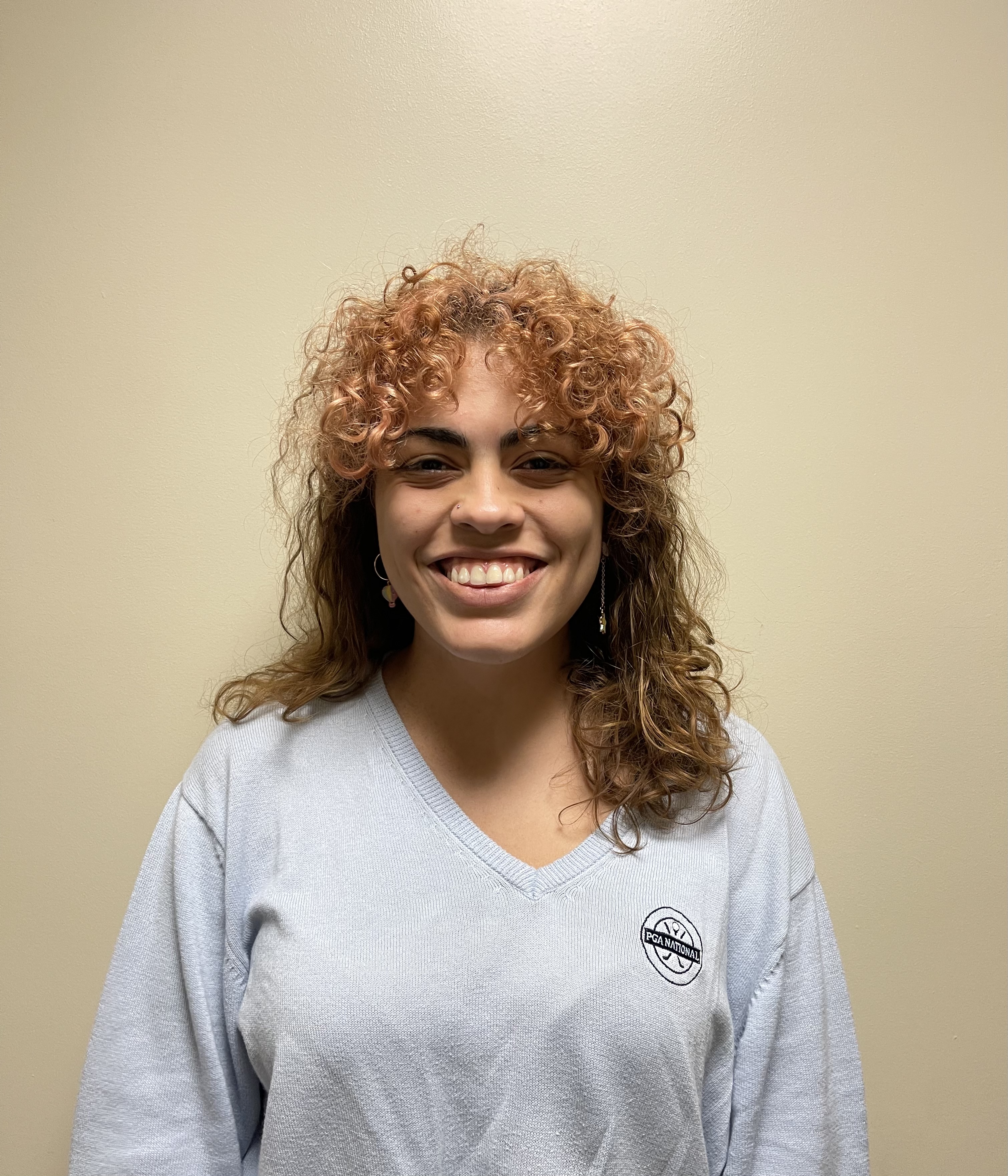
BIO
I am a first-year studying behavioral neuroscience from Fort Myers, Florida. I have varied interests in biology, psychology, and sociology. I look for research opportunities wherever I can and hope to one day find something at the intersection of all three fields!
The Effect of Age of Gender Transition on the Use of Mitigating Phrases in the Speech of Transgender Men
Authors: Leilanis Cancel-Lopez, Jay SeiglerStudent Major: behavioral neuroscience
Mentor: Jay Seigler
Mentor's Department: Department of Modern Languages and Linguistics Mentor's College: College of Arts and Sciences Co-Presenters:
Abstract
Sociolinguistics is the study of language in relation to social factors such as region, gender, and class. This study focuses on the differences in language used by cisgender men– that is, men assigned male at birth who continue to identify as male– and transgender men– men assigned female at birth who transitioned to male. This study aims to measure both groups’ use of mitigating phrases. These are phrases that purposely imply vagueness, examples being “in my opinion” or “sort of”. Past research has shown that mitigating phrases are more commonly used by cisgender women when compared to their cisgender male counterparts, and that socialization from a young age helps develop these speech patterns; my mentor hypothesizes, then, that transgender men who transitioned socially and/or medically are less likely to use these mitigating phrases than their counterparts who transitioned past the age of thirteen.
Keywords: Languages, LGBT, Sociology
22nd annual Undergraduate Research Symposium
Jordan Neltner Poster Session 2: 10:00 - 10:45/ Poster #42

BIO
Hello! My name is Jordan and I am from West Palm Beach, Florida. My research interests include healthcare, mental health, and anything that involves bettering the lives of others.
FSU-FAMU Global Health Collaboration Project: Mental Health Team
Authors: Jordan Neltner, Sunny NarayananStudent Major: Nursing
Mentor: Sunny Narayanan
Mentor's Department: Research Mentor's College: College of Medicine Co-Presenters: Otufa Noor
Abstract
The purpose of the Global Health Collaboration Project is to develop culturally acceptable healthcare practices and education to rural communities in Honduras.
The objective of the mental health team is to collect information regarding the prevalence of symptoms of anxiety in rural communities in Honduras and to increase awareness of symptoms of anxiety among village healthcare workers.
The data will be collected using a survey tool after receiving an Institutional Review Board (IRB) approval in the US and an Ethics Committee Approval in Honduras.
Healthcare in rural communities in Honduras are often underfunded and overlooked.
In addition, mental health is heavily stigmatized in Honduras.
For these reasons, it is crucial that research is conducted, and action is taken to help those in rural communities receive the care they need and deserve.
Keywords: Mental Health, Honduras, Global, Healthcare
22nd annual Undergraduate Research Symposium
Olivia Stuehr Poster Session 3: 11:00- 11:45/Poster #42

BIO
I am a second-year undergraduate student studying biological sciences. I do undergraduate research at the Lazenby lab which is an analytical chemistry lab where I primarily work with microelectrodes. In the future, I hope to go to medical school.
Controlling surface morphology of electrodeposited gold for the preparation of electrochemical aptasensors
Authors: Olivia Stuehr, Amanda RitzStudent Major: Biological Sciences
Mentor: Amanda Ritz
Mentor's Department: Chemistry & Biochemistry Mentor's College: Campbell University Co-Presenters: Danté Comer
Abstract
Electrochemical, aptamer-based (EAB) sensors are an emerging class of biosensor with promising applications for point-of-care (POC) devices, and have been used to detect and quantify a wide range of biological and chemical analytes with high specificity. EAB sensors are typically fabricated on gold electrode surfaces, for which there are various methods of increasing the microscopic surface area. This is typically done to accommodate a greater number of aptamer probes on the surface to enhance the current response, which is particularly important for miniaturized sensors. Previous attempts to increase the surface area have not thoroughly assessed the effects of gold morphology on the performance of EAB sensors on both macroscale and miniaturized sensors. Small-scale sensors will enable spatiotemporally resolved measurements, however, there is a lack of aptamer-based probes fabricated on the micro and nanoscale, with few examples in literature. Here, we used electrodeposition to increase the microscopic surface area and to control surface morphology, to explore the resulting effects on EAB sensor performance on the macroscale and the microscale. Using aptamers specific to target analytes adenosine triphosphate (ATP) and dopamine (DA), square wave voltammetry, and cyclic voltammetry were used to interrogate the EAB sensors. Since electrodeposition on the two size scales resulted in different surface features, the comparison of macroscale and microscale sensors gave additional insights into how gold nanostructures affected the EAB sensor self-assembled monolayer and the overall sensor performance.
Keywords: Biosensing, Morphology, Aptasensor, Microelectrode, Nanostructure
22nd annual Undergraduate Research Symposium
Emily Pacenti Poster Session 6: 2:30-3:15/Poster #25
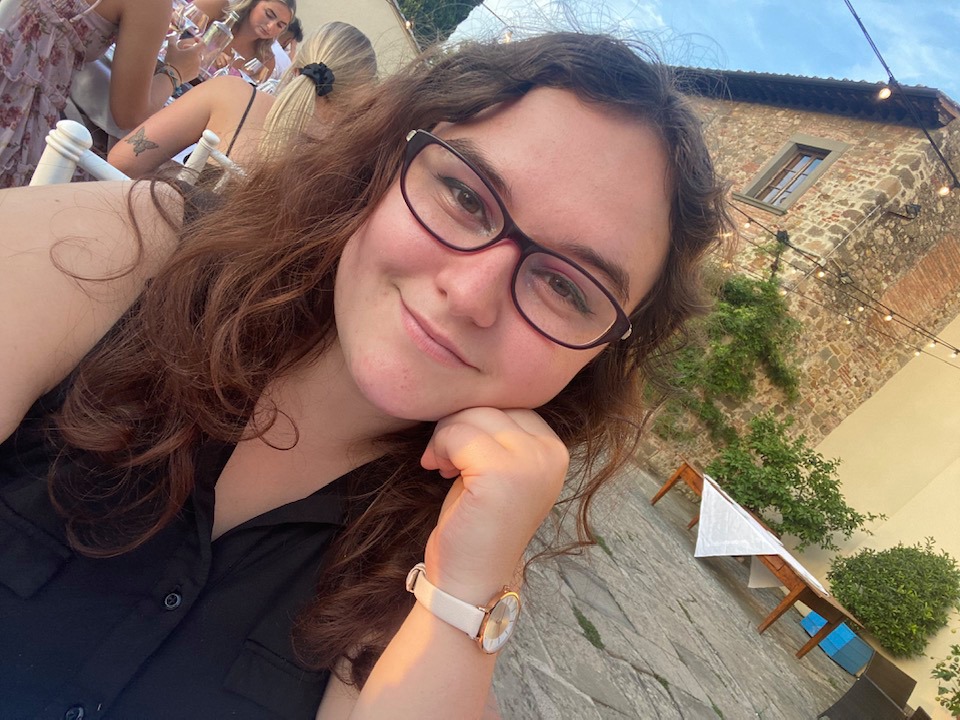
BIO
I am an aspiring sociologist concentrating on marriage/family, gender, and sexual behavior. I have a strong interest in the study of queer family units in particular, especially transgender and lesbian parenthood. I am graduating this semester with a dual degree in Political Science and Women's Studies with additional minors in Child Development and Sociology. I hope to contribute to the growing understanding of gender and sexuality as queer youth in particular are becoming increasingly targeted by state governments across the nation and to create meaningful research that uplifts women and the queer community.
Pregnancy Discrimination in Higher Education : A Structural Approach
Authors: Emily Pacenti, Dr. Leslie RichardsonStudent Major: Political Science, Women's Studies
Mentor: Dr. Leslie Richardson
Mentor's Department: Women's Studies Mentor's College: College of Arts and Sciences Co-Presenters:
Abstract
It is my argument that pregnant students at public and private universities are systematically disenfranchised by university systems, not primarily through individual interactions that involve prejudice and discrimination, but through the common structure of universities themselves. The primary research question this thesis will attempt to answer is how do structural aspects of universities disadvantage pregnant students? Perspectives of feminist theory and conflict theory will be utilized to look at what makes a group minoritized and what makes discrimination structural as opposed to interpersonal. Using these theories as guides, I will argue that pregnant students function as a minoritized or disenfranchised group at universities because there are structural elements, such as universitywide policy and societal views of natalism/pregnancy, that put them at a disadvantage. Through a combination of theoretical analysis and fact collecting about the average American university’s resources and policies regarding pregnant students, it is clear that, on average, institutions of higher education are structured in a way that inhibits the success of pregnant students.
Keywords: Gender, Feminism, Pregnancy, Discrimination, Sociology
22nd annual Undergraduate Research Symposium
Alanis Villaquiran Poster Session 4: 12:30 - 1:15/Poster #57

BIO
Name: Alanis Villaquiran
Research Interests: Topics on Mental health and Disabilities
Hometown: Miami, FL
Career goals: I aspire to do something in the Forensics field in the future, specifically forensics psychology on the pre-law track. Hopefully, join the FBI.
Fun fact: I have two dogs; a pug and a mixed pekingese
Fav TV show: Criminal Minds
Exploring Impacts of Psychosocial Factors on Receiving Accomodations and Employment Outcome
Authors: Alanis Villaquiran, Shengli DongStudent Major: Psychology
Mentor: Shengli Dong
Mentor's Department: Department of Educational Psychology and Learning Systems Mentor's College: Psychology Co-Presenters: Olivia Eto
Abstract
This quantitative study aims to better understand the impacts of psychosocial factors regarding getting accommodations among people with disabilities, and how the receiving of accommodations may further impact employment outcomes (e.g., job satisfaction and job performance).
Our research was conducted on 596 participants with disabilities recruited from multiple national and state organizations and agencies serving or advocating for people with disabilities such as the American Association of People with Disabilities, the National Multiple Sclerosis Society, and its state chapters. A mediation model was conducted to investigate the impacts of the psychosocial factors, by running factor analyses for computing coefficient omega and the mediation model in Mplus 8.4. The results demonstrate the significance of workplace supports on receiving workplace accommodation and job satisfaction among people with disabilities; the results also show the direct impact of receiving accommodation on job satisfaction. No relations were found among other variables in the study.
Keywords: Workplace Accomodations, Workplace Support, Receiving Accomodations, Self-Efficacy, Positive and Negative Affect
22nd annual Undergraduate Research Symposium
Alissa Kalyan Poster Session 4: 12:30 - 1:15/Poster #16

BIO
Alissa Kalyan is a second year student at FSU majoring in Behavioral Neuroscience with a minor in chemistry. She is looking forward to continuing her involvement in undergraduate research at Florida State while also working as a Clinical Medical Assistant at Tallahassee Memorial Hospital. She is on a pre-medical track and would love to pursue a career in medicine.
Effects of Sleep Fragmentation on Alcohol Response in Drosophila melanogaster
Authors: Alissa Kalyan, Dr. Lisa LyonsStudent Major: Behavioral Neuroscience
Mentor: Dr. Lisa Lyons
Mentor's Department: Department of Biological Science, Program in Neuroscience Mentor's College: College of Arts and Sciences Co-Presenters: Jesus Avila, Tomas Vasquez
Abstract
It is estimated that 50 to 70 million Americans suffer from sleep disturbances and circadian disorders, affecting everyday functioning and increasing the risk of drug abuse, cancers, metabolic disorders, and other diseases. Previous research has found an association between increased incidents of alcohol abuse and individuals who experience regular circadian rhythm or sleep disturbance, such as shift workers. Gaining a deeper understanding of the effect of circadian rhythm disruption on drug tolerance and recovery is a crucial first step in tackling the issue of increased alcohol toxicity and abuse in sleep fragmented populations. In this study, we investigated how sleep fragmentation affected alcohol neurobiology using Drosophila melanogaster as a model. The high degree of molecular conservation across species and the stereotypical alcohol behaviors from drosophila to humans make drosophila an ideal model organism for studying sleep and alcohol response. We studied two different sleep fragmentation paradigms over four days of fragmentation in young adult flies (3-7 days old) to investigate alcohol sedation responses, alcohol toxicity, and the recovery. Preliminary results suggest an association between increased sleep fragmentation and faster sedation responses, as well as increased mortality rates. Studies are ongoing, and the anticipated results will provide a foundation for future studies investigating the molecular pathways through which sleep disturbances affect alcohol responses.
Keywords: sleep fragmentation, alcohol response, drosophila

